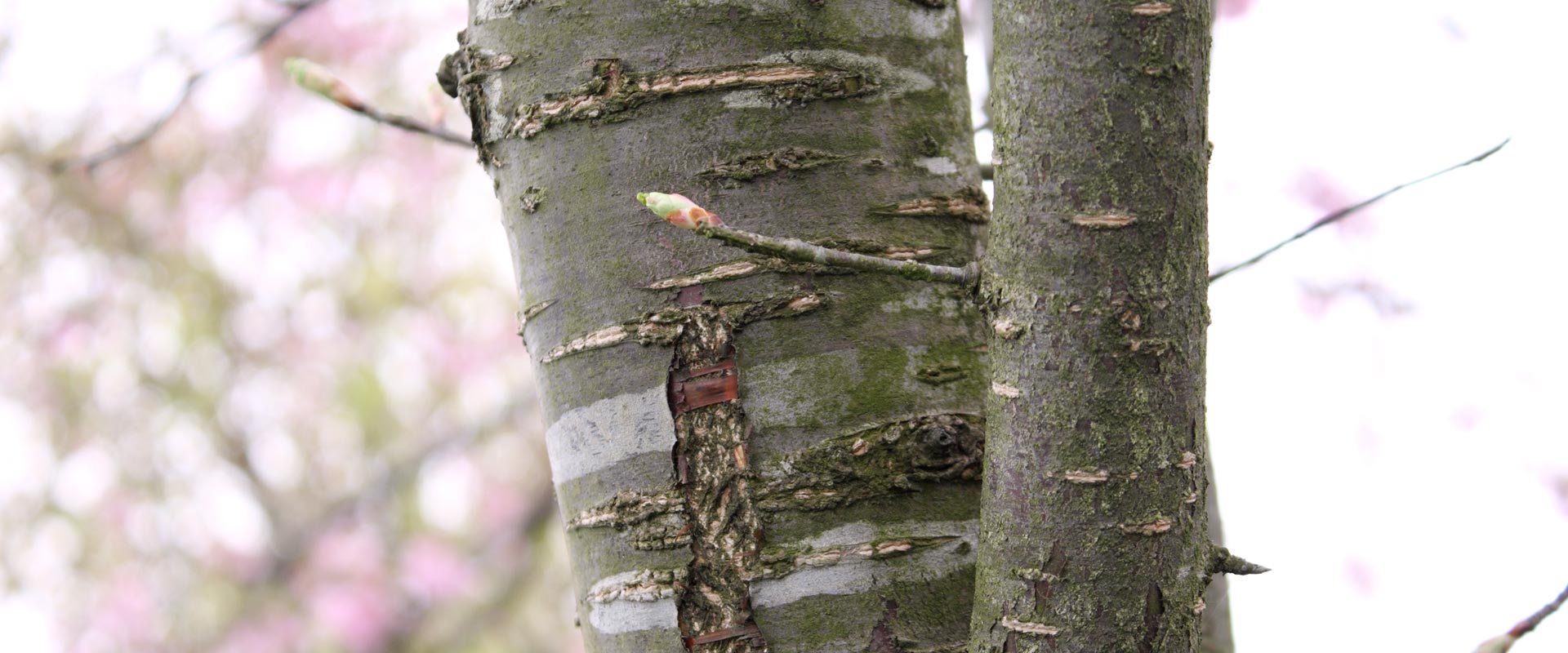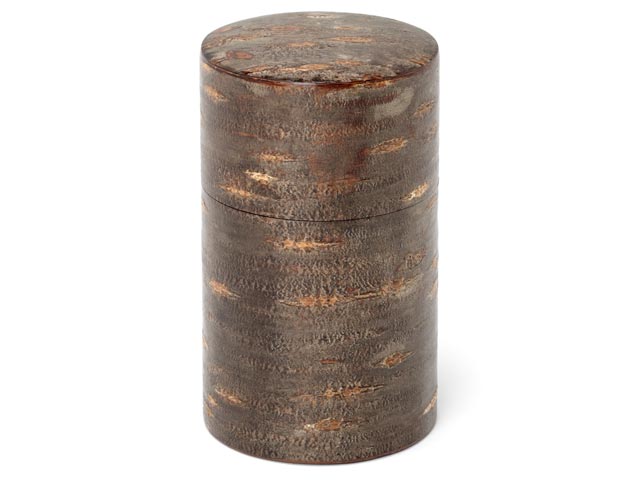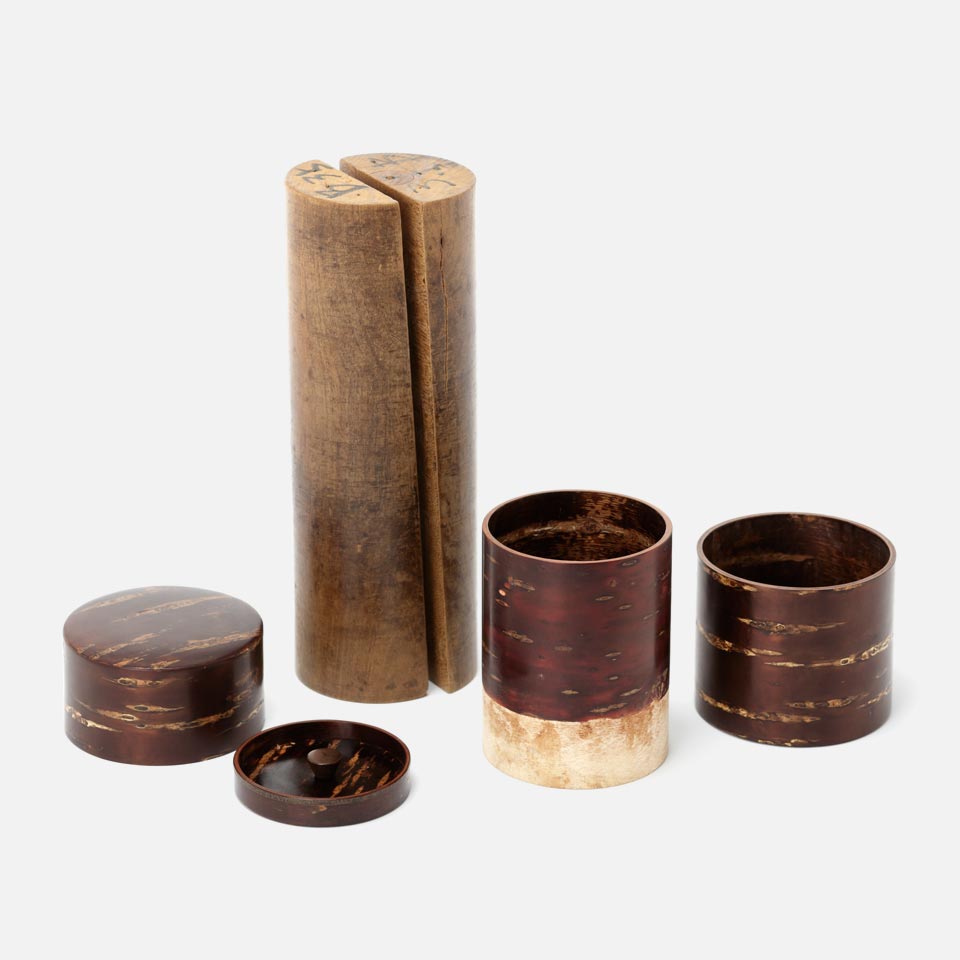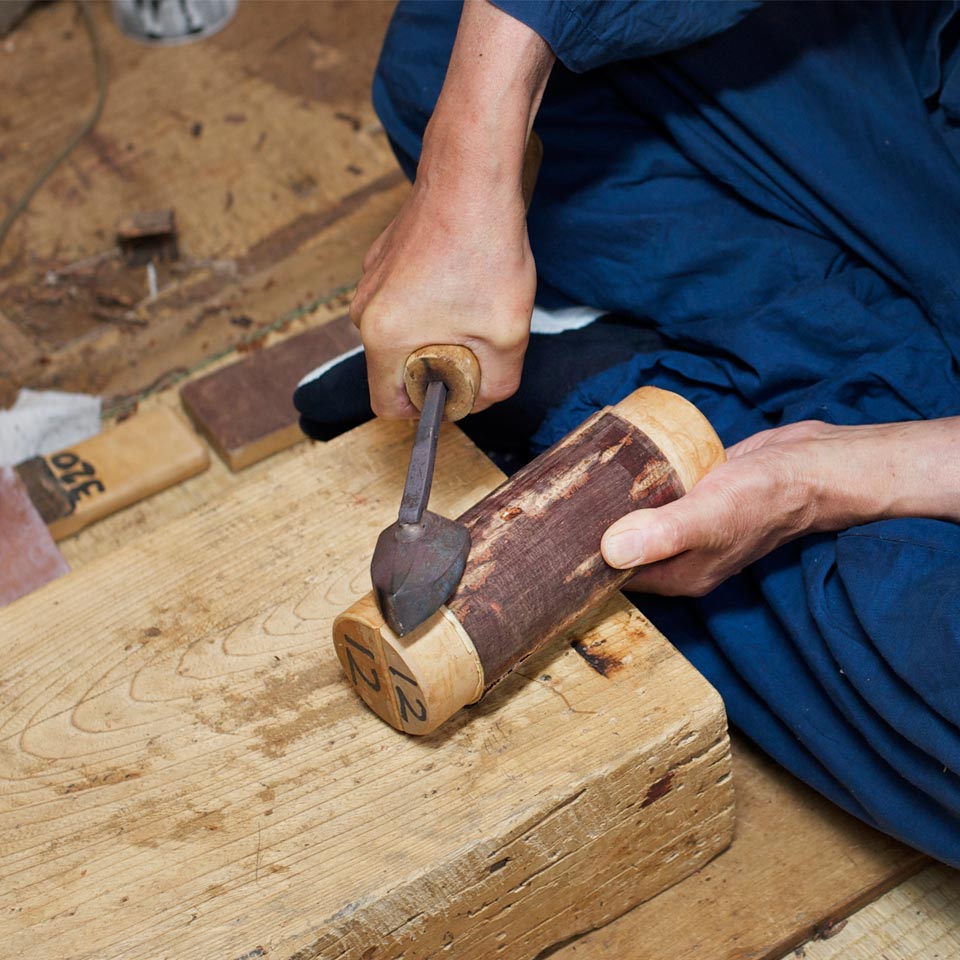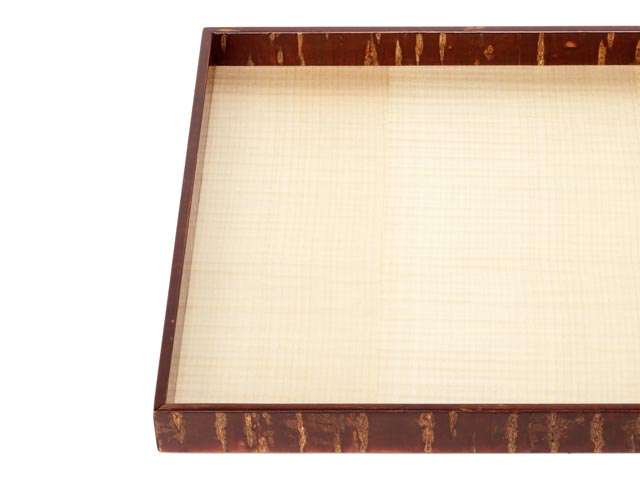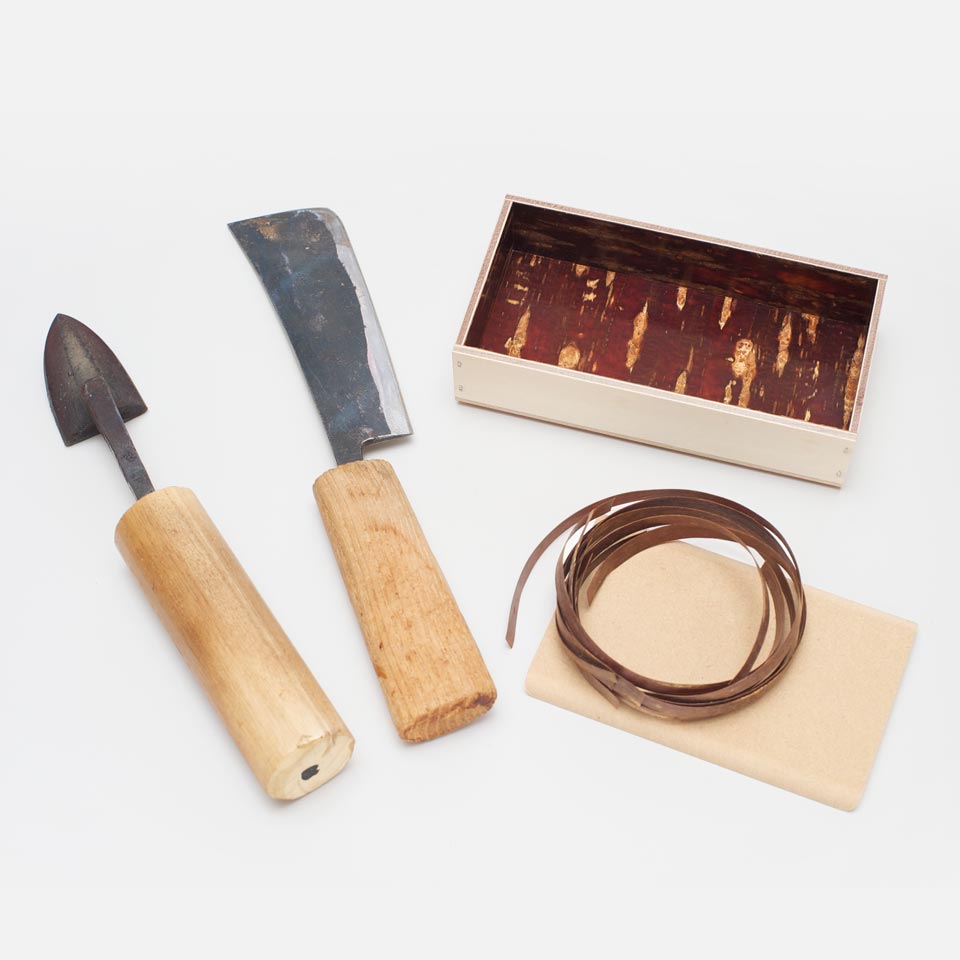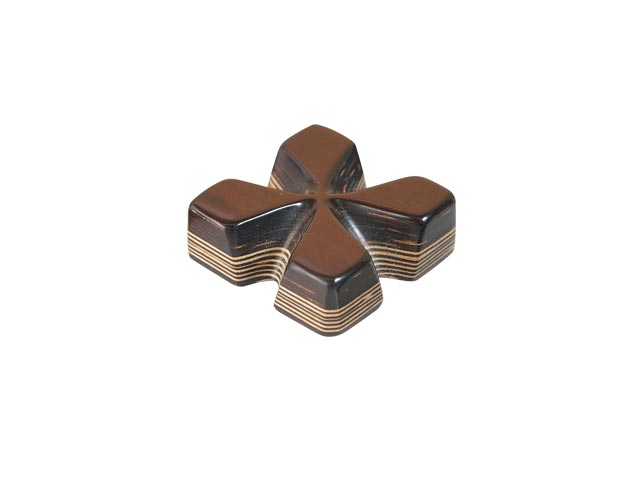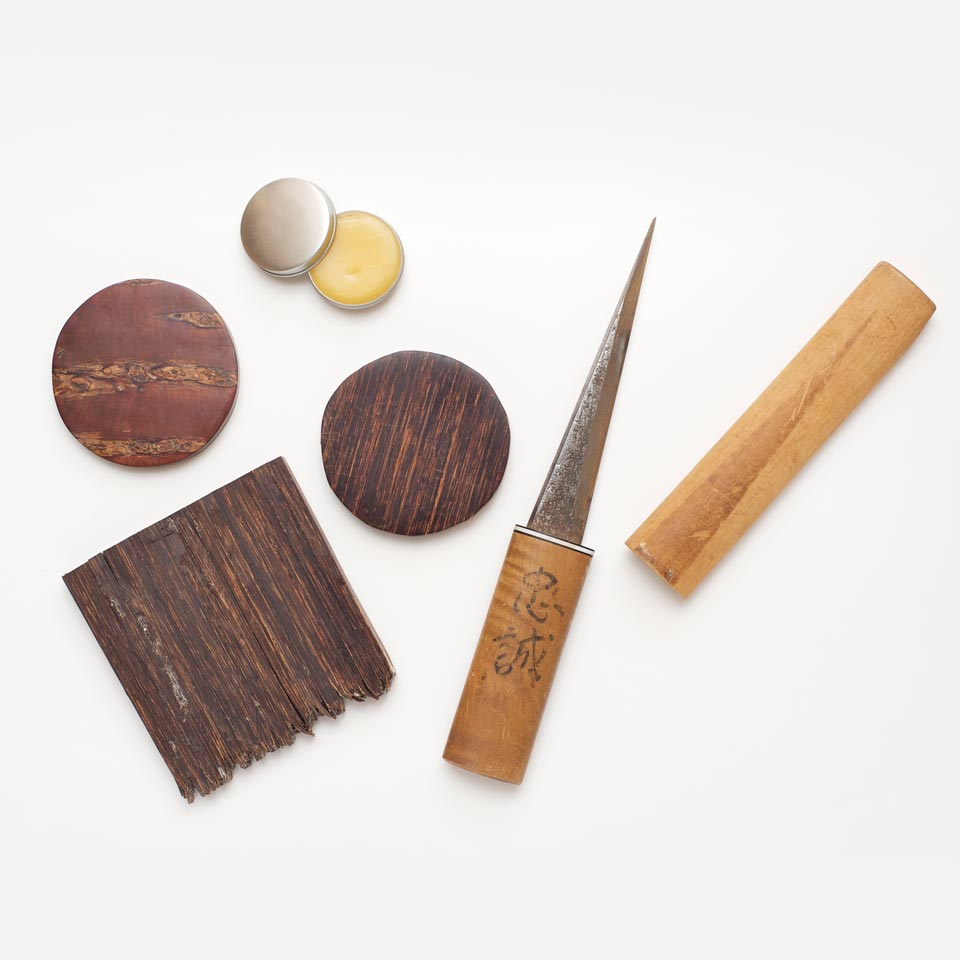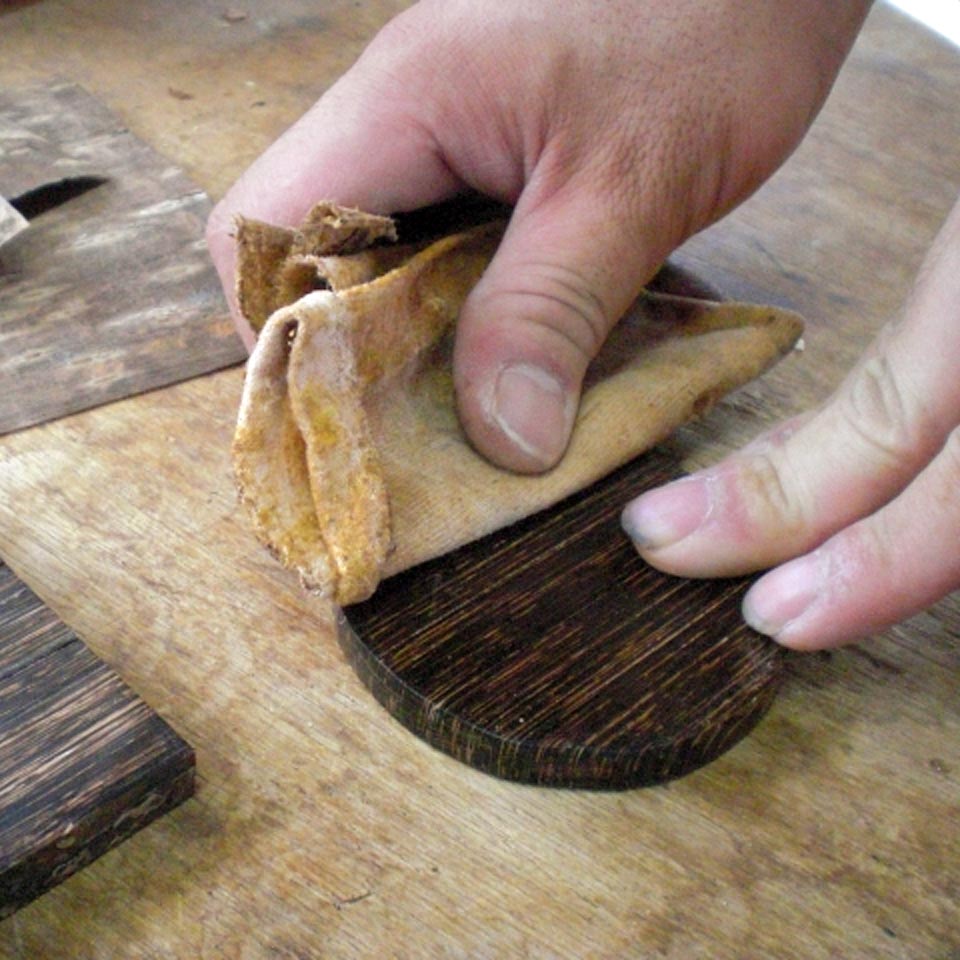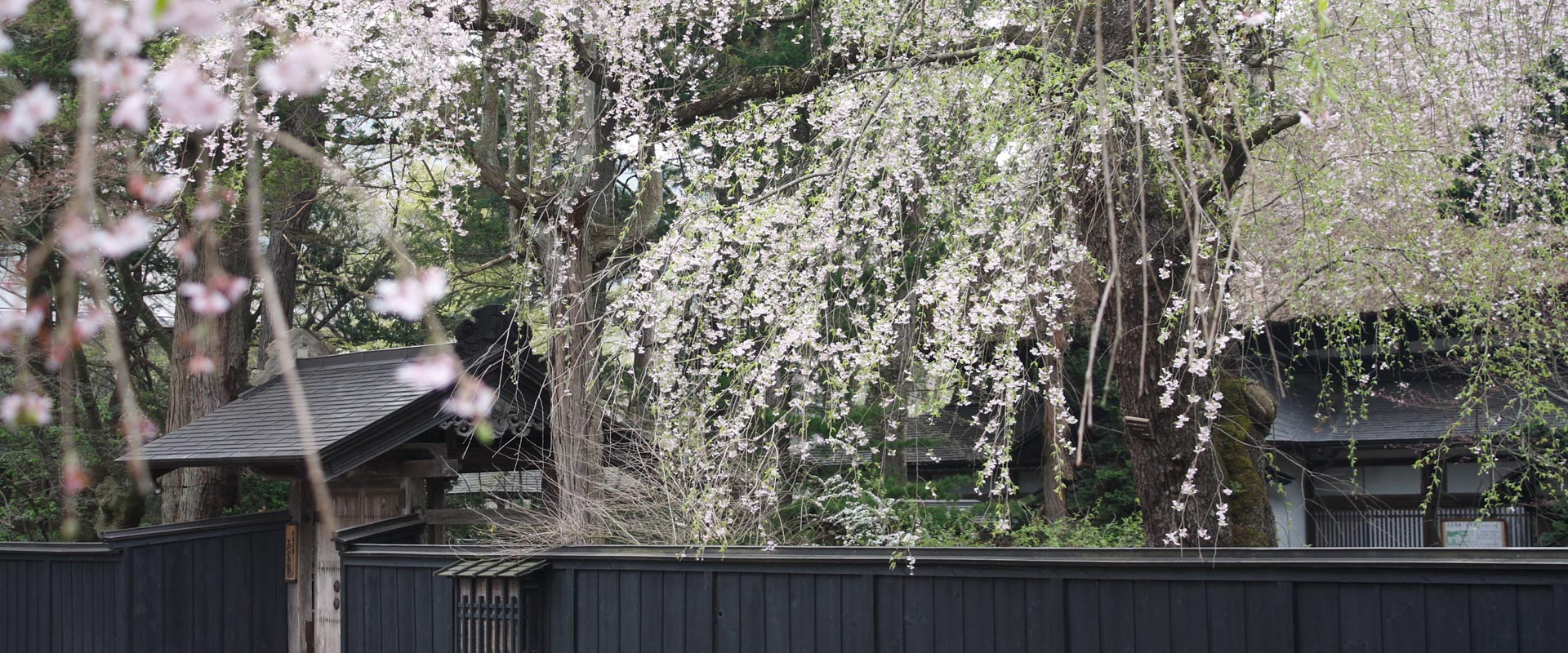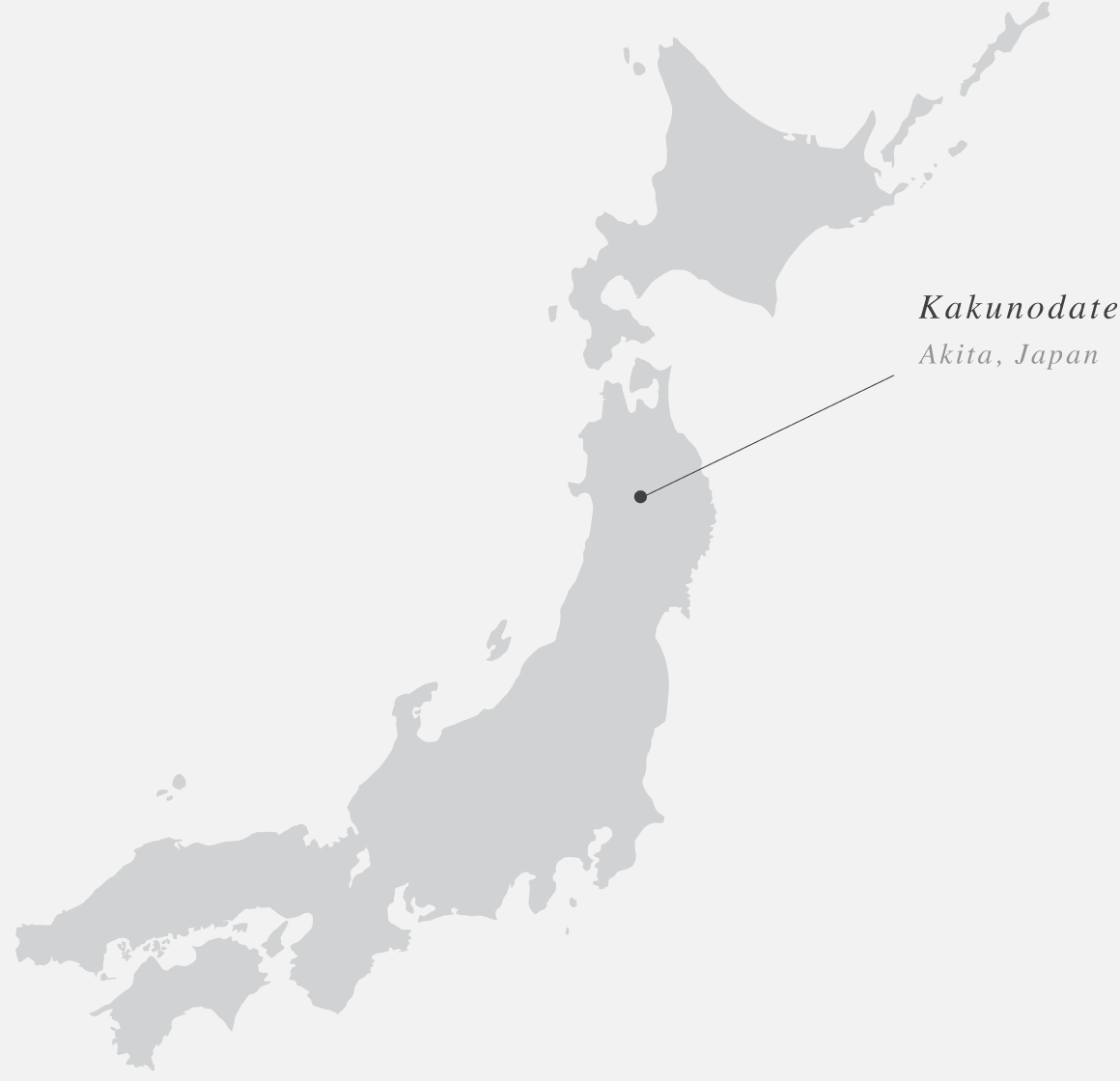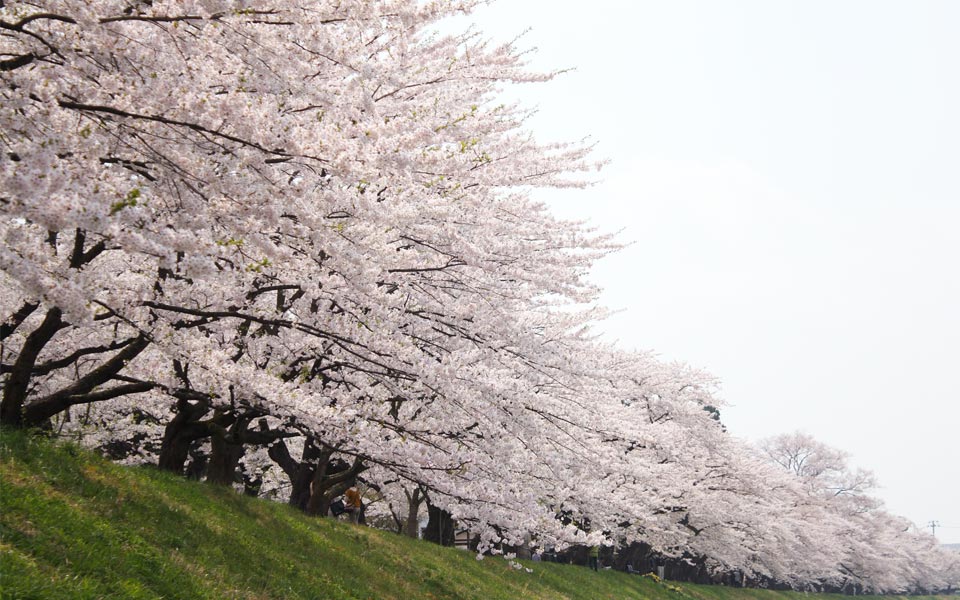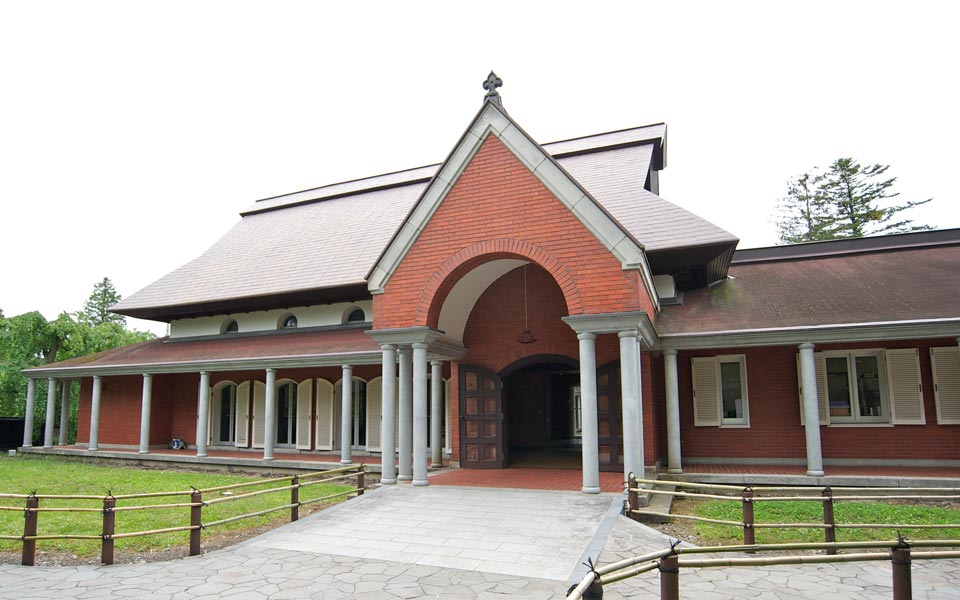Materials
Cherry Bark
Cherry bark is an eco-friendly material as it will regrow after being harvested. Cherry bark ware mainly have two different kinds of finishes: the one is Marble, that retains the appearance of the raw bark ; the other is Natural, whose surface is thinly scraped to a polish. The surfaces of tea caddies will grow more lustrous the more you handle them.
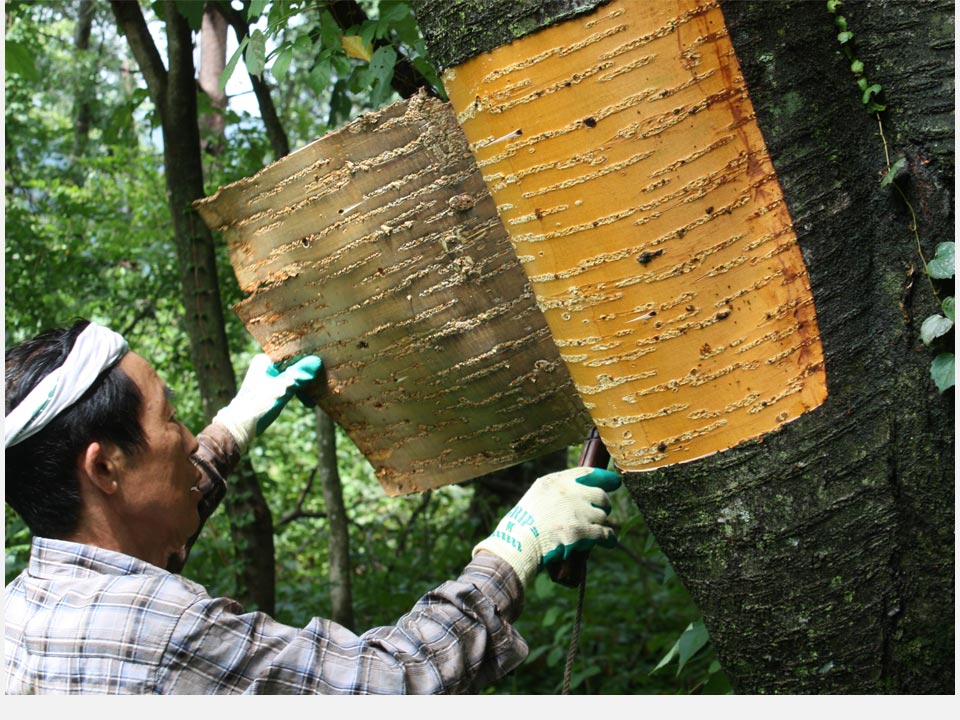
Harvest
The cherry bark is harvested between August and September in the mountains of the northern area of Japan because the trees contain a generous quantity of water. Thus the professional experts can cleanly peeled away from the trunk. And it has been dried naturally for about two years. Even after the cherry bark has been harvested from a tree, if the total amount of harvesting is under one third of the entire tree, the bark regrows.

Finish
Marble is the raw bark with gray-brown color. Only fine raw bark can be used for it, thus it is precious. The raw bark becomes reddish brown color by whittling, and then polishing it to a high shine, called Natural. To transform wild cherry bark into the craft material “Marble” and “Natural”, which we use in our collections, the craftsman whittles and polishes each sheet of bark by hand.
